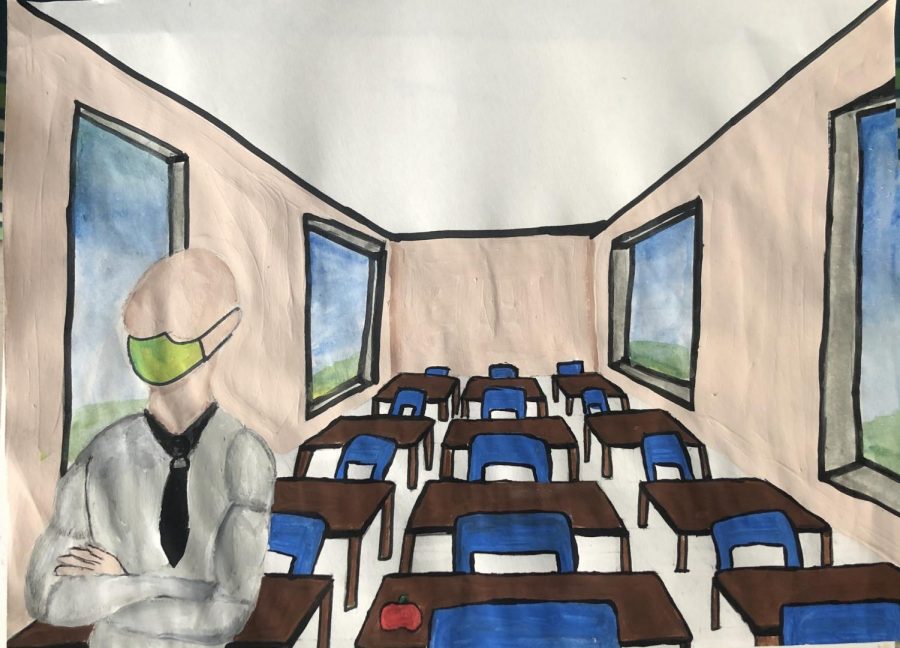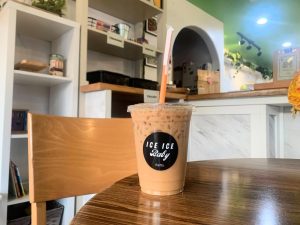Ventura Unified Schools’ plans for potential reopening amid COVID-19 pandemic
Vanessa Rodriguez
As we begin to see a decline in COVID-19 cases, Ventura Unified is evaluating whether it is in the best interest of students, staff and families to open up schools. However, there will be extreme precautions taken among the staff members to ensure our safety.
October 13, 2020
Tired of quarantine? Well, as new advances in fighting the COVID-19 virus are made, the longing for normalcy is not unnatural, especially for the students and faculty of Ventura Unified School District (Ventura Unified).
Even though many are itching to return back to campus, no official plans have been finalized for the return of Ventura Unified students and faculty, but new reports have been released by the Ventura County Office of Education(VCOE) regarding the matter. However, there is still rising concern about reopening school among parents, teachers, students and other administrators.
When asked her view on the reopening of Ventura Unified schools, Katie Tedford, the Vice Principal of Foothill Technology High School (Foothill Tech), said her biggest concern would be “maintaining student and staff safety.”
“We want to ensure that we keep all involved safe, while providing an exceptional education,” says Tedford.
The first requirement for the reopening of Ventura Unified schools is for Ventura County to move from widespread (purple) to substantial (red) on the COVID risk chart. The widespread level involves the shutdown of all businesses not deemed essential, while the substantial level allows for the restricted opening of some nonessential businesses. As of Oct. 6, 2020, the county has been lowered a tier as positive test rates dropped from >8% to 5-8%, and adjusted cases dropped from >7 per every 100,000 to 4-7 per every 100,000. If the numbers remain steady, school districts have the option to reopen, but it is unlikely that they will do so right away.
Once schools have decided it is the appropriate time to reopen, hybrid schedules will most likely become a reality for students. Tedford added, “the idea is that when we initially come back we’ll use phase 1 (25% of students attend campus on their assigned day, meaning they will each come to class once a week, and it would take two weeks to attend every period), then when safe would enter phase 2 (50% of students would attend campus on their assigned day, meaning they will each come to class twice a week, and it would take one week to attend every period).”
However, Ventura Unified also plans on making the option available for families who wish to keep their children at home with fully distanced learning.
Some students have expressed concerns for families that do not yet feel safe allowing their student to return to the classroom. For example, Levi Davis ‘22 questioned, “what are people going to do if they ride the bus, have families that live with their grandparents or if they don’t feel comfortable with their children going to school?” Davis later explained that he believes that some of the most important positive aspects of reopening schools are “social interactions for students, face to face teaching, and a better high school experience.”
The hybrid schedules for reopening might include indoor and outdoor instruction, shorter and/or alternating school days and assigned student groups to limit exposure. The school board recognizes that it is very possible that the virus might spread, so they plan to limit individual interaction with the entire student body.
“Positives of reopening include increasing student engagement, supporting student social needs, providing more engaging education,” explained Tedford. She also mentioned that there are some negative aspects, including, “safety and risk concerns for students and staff.” She added that, “students would only be in person once a week during phase 1 and only twice a week during phase 2.”
To apply to social distancing and CDC guidelines, masks and/or face shields would be also required during the day, and a 6 foot distance between every person would be maintained at all times. Sterilization of all surfaces and objects touched by students and faculty will take place, and the assembly of a contact tracing team is in the works. Tedford also stated that “there are many reopening logistics but the most noticeable to students involve social distancing (in classrooms and outside of classrooms), wearing masks, sanitizing high touch surfaces, promoting good personal hygiene and hand washing.”
As far as sports and athletics go, the nitty-gritty details are still up in the air. Practices that can take place in a large, open-air area have been permitted to start training for the hope that tournaments will recommence in the near future.
Although it feels like the never-ending year of 2020 and COVID-19, schools still have to apply to certain safety protocols before everyone can return. The situation of reopening and having to shut down again due to a surge in cases is one that is to be avoided through patience and caution.
Tedford concluded with, “this is an extremely complex issue with compelling components on both sides of the discussion that have serious ramifications to all possible solutions.”















